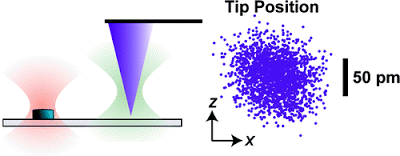Atomic Force Microscopes 100 times More Stable: Picometer Stability
The JILA team has controlled the probe’s position in three dimensions to better than 40 picometers (1 nanometer = 1000 picometers) over 100 seconds. In imaging applications, they showed the long-term drift at room temperature was a mere 5 picometers per minute, a 100-fold improvement over the best previous results under ambient conditions. Just like …










